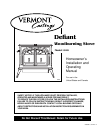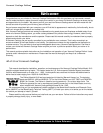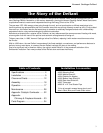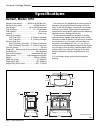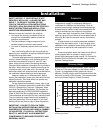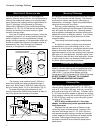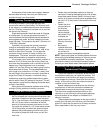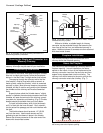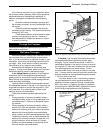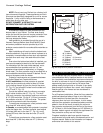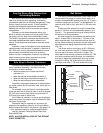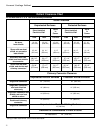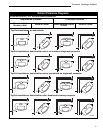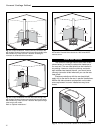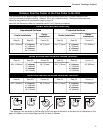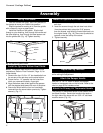
9
Vermont Castings Defiant
If the chimney connector in your installation enters
the chimney above a fireplace, follow all the guidelines
mentioned above for freestanding installations. In
addition, give special consideration to the following
points:
• Check the clearance between the stove and
the chimney connector, and any combustible trim or
the mantel.
• Check the clearance between the chimney
connector and the ceiling. The clearance should be
at least 18" (457 mm).
• The fireplace damper must be sealed to keep
room air from escaping up the flue. However, it
must be possible to reopen the damper to inspect
or clean the chimney.
Through the Fireplace
Installations through the fireplace opening have not
been tested or approved.
Wall pass-Throughs
Whenever possible, design your installation so that
the connector does not pass through a combustible
wall. If you are considering a wall pass-through in your
installation, check with your building inspector before
you begin. Also, check with the chimney connector
manufacturer for any specific requirements.
Accessories are available for use as wall pass-
throughs. If using one of these, make sure it has been
tested and listed for use as a wall pass-through.
In the United States, the National Fire Protection
Association (NFPA) has established guidelines for
passing chimney connectors through combustible walls.
Many building code inspectors follow these guidelines
when approving installations.
Figure 8 shows one NFPA-recommended method.
All combustible material in the wall is cut away from the
single-wall connector to provide the required 12" (300
mm) clearance. Any material used to close up the
opening must be noncombustible.
Three other methods are also approved by the
NFPA:
• Placing a section of chimney connector inside a
ventilated thimble, which in turn is separated from
combustibles by 6" (150 mm) of fiberglass insulat-
ing material.
• Placing a section of chimney connector inside a
section of 9" (230 mm) diameter, solid-insulated,
factory-built chimney, with two inches of air space
between the chimney section and combustibles.
• Using a section of solid-insulated double-wall High
Temperature chimney, with an inside diameter the
same as the chimney connector, at least one inch
of solid insulation, and a minimum of 9 inches
(229mm) air space between the outer wall of the
chimney section and combustibles.
D
E
F
I
A
N
T
Wall Stud
Chimney
Connector
Floor
Protection
12” of
Noncombustible
Material
ST493
Fig. 8 an approved wall pass-through for the United States.
In Canada, The Canadian Standards Association
has established different guidelines for wall pass-
throughs. Figure 9 shows one method, in which all
combustible material in the wall is cut away to provide
the required 18" (460 mm) clearance for the connector.
The resulting space must remain empty. A flush-
mounted sheet metal cover may be used on one side
only. If covers must be used on both sides, each cover
must be mounted on noncombustible spacers at least
1" (25 mm) clear of the wall.
Your local dealer or your local building inspector
can provide details for other approved methods of
passing a chimney connector through a combustible
wall in your area. In Canada, this type of installation
must conform to CAN/CSA-B365, Installation Code for
Solid Fuel Burning Appliances and Equipment.
D
E
F
I
A
N
T
18” (460mm) clearance
between pipe and
sides/top/bottom of
opening
ST494
Fig. 9 An approved wall pass-through for Canada.



